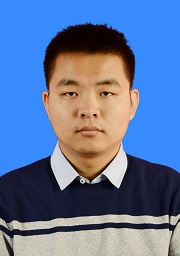
Associate Professor Dong Guan
Yangzhou University, China
Title: Multi-Source Bionic Assembly Design and Dynamic Regulation of PEMFC for Service Safety
Abstract:
Most commercially available Proton exchange membrane fuel cells (PEMFCs) utilize bolt clamping or strap fixation for stack assembly, where the applied forces are primarily concentrated on both sides of the endplates. Consequently, conventional assembly methods frequently result in non-uniform contact pressure distribution across the bipolar plates, thereby reducing the PEMFC electrochemical performance. Furthermore, under vibrational conditions, fretting friction between the bipolar plates and the membrane electrode assembly (MEA), can generate localized hotspots, ultimately causing bipolar plate ablation.
To address these challenges, this study draws inspiration from the arcuate profile of the nacreous layer in shells and the vibration mitigation mechanism of woodpeckers, proposing a multi-source bio-inspired assembly method to achieve a more uniform contact pressure distribution in PEMFCs. Furthermore, a spring-mass chain model and dispersion equation analysis are employed to elucidate the vibration bandgap regulation mechanism of the bio-inspired assembly.
Biography:
Dong Guan was born in Henan, P. R. China in 1987. He received the Master degree from Northwestern Polytechnical University in 2013, and PhD degree and Xi’an Jiaotong University in 2016, both in Mechanical Engineering. From 2015 to 2016, he has been a visiting PhD researcher in University of Illinois at Urbana-Champaign, which has been funded by the China Scholarship Council. From 2017, he joined the School of Mechanical Engineering in Yangzhou University, as Assistant and Associate Professor, respectively. He is the young editorial board member of Electro-Mechanical Engineering magazine, has published more than 60 internationally refereed papers, as well as the referee of more than 50 journals, such as Nano Energy, JSV, and Applied Acoustics, etc. His research interests include Vibration Control, Energy Harvesting, Vehicle NVH, etc.